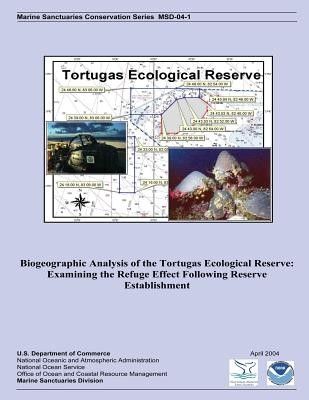
- We will send in 10–14 business days.
- Author: U S Department of Commerce
- Publisher: CreateSpace Independent Publishing Platform
- Year: 2014
- Pages: 36
- ISBN-10: 1495480941
- ISBN-13: 9781495480942
- Format: 21.6 x 27.9 x 0.2 cm, softcover
- Language: English
- SAVE -10% with code: EXTRA
Biogeographic Analysis of the Tortugas Ecological Reserve (e-book) (used book) | bookbook.eu
Reviews
Description
Almost 120 days at sea aboard three NOAA research vessels and one fishing vessel over the past three years have supported biogeographic characterization of Tortugas Ecological Reserve (TER). This work initiated measurement of post-implementation effects of TER as a refuge for exploited species. In Tortugas South, seafloor transect surveys were conducted using divers, towed operated vehicles (TOV), remotely operated vehicles (ROV), various sonar platforms, and the Deepworker manned submersible. ARGOS drifter releases, satellite imagery, ichthyoplankton surveys, sea surface temperature, and diver census were combined to elucidate potential dispersal of fish spawning in this environment. Surveys are being compiled into a GIS to allow resource managers to gauge benthic resource status and distribution. Drifter studies have determined that within the 30 days of larval life stage for fishes spawning at Tortugas South, larvae could reach as far downstream as Tampa Bay on the west Florida coast and Cape Canaveral on the east coast. Together with actual fish surveys and water mass delineation, this work demonstrates that the refuge status of this area endows it with tremendous downstream spillover and larval export potential for Florida reef habitats and promotes the maintenance of their fish communities.
EXTRA 10 % discount with code: EXTRA
The promotion ends in 19d.15:16:36
The discount code is valid when purchasing from 10 €. Discounts do not stack.
- Author: U S Department of Commerce
- Publisher: CreateSpace Independent Publishing Platform
- Year: 2014
- Pages: 36
- ISBN-10: 1495480941
- ISBN-13: 9781495480942
- Format: 21.6 x 27.9 x 0.2 cm, softcover
- Language: English English
Almost 120 days at sea aboard three NOAA research vessels and one fishing vessel over the past three years have supported biogeographic characterization of Tortugas Ecological Reserve (TER). This work initiated measurement of post-implementation effects of TER as a refuge for exploited species. In Tortugas South, seafloor transect surveys were conducted using divers, towed operated vehicles (TOV), remotely operated vehicles (ROV), various sonar platforms, and the Deepworker manned submersible. ARGOS drifter releases, satellite imagery, ichthyoplankton surveys, sea surface temperature, and diver census were combined to elucidate potential dispersal of fish spawning in this environment. Surveys are being compiled into a GIS to allow resource managers to gauge benthic resource status and distribution. Drifter studies have determined that within the 30 days of larval life stage for fishes spawning at Tortugas South, larvae could reach as far downstream as Tampa Bay on the west Florida coast and Cape Canaveral on the east coast. Together with actual fish surveys and water mass delineation, this work demonstrates that the refuge status of this area endows it with tremendous downstream spillover and larval export potential for Florida reef habitats and promotes the maintenance of their fish communities.


Reviews